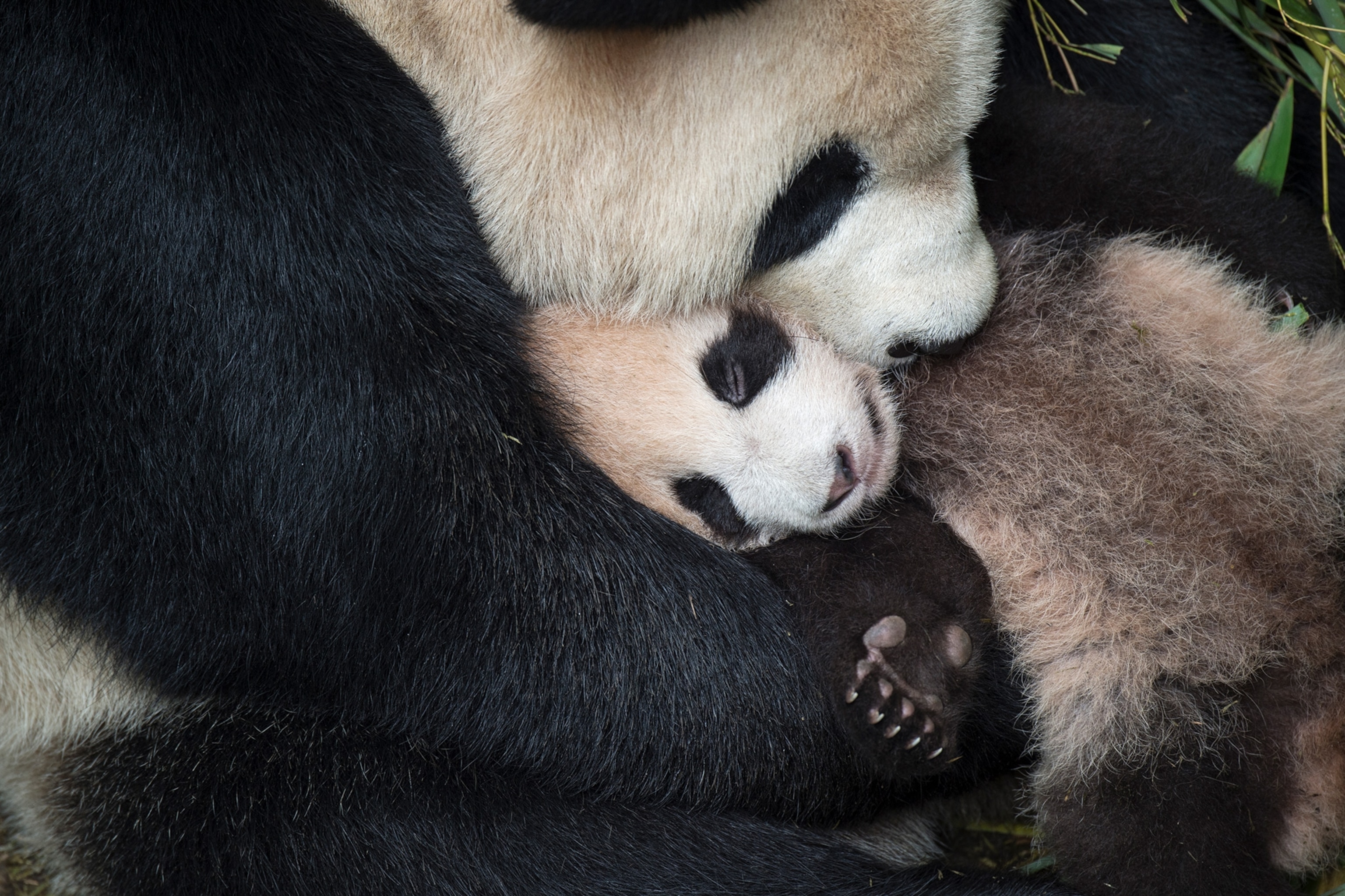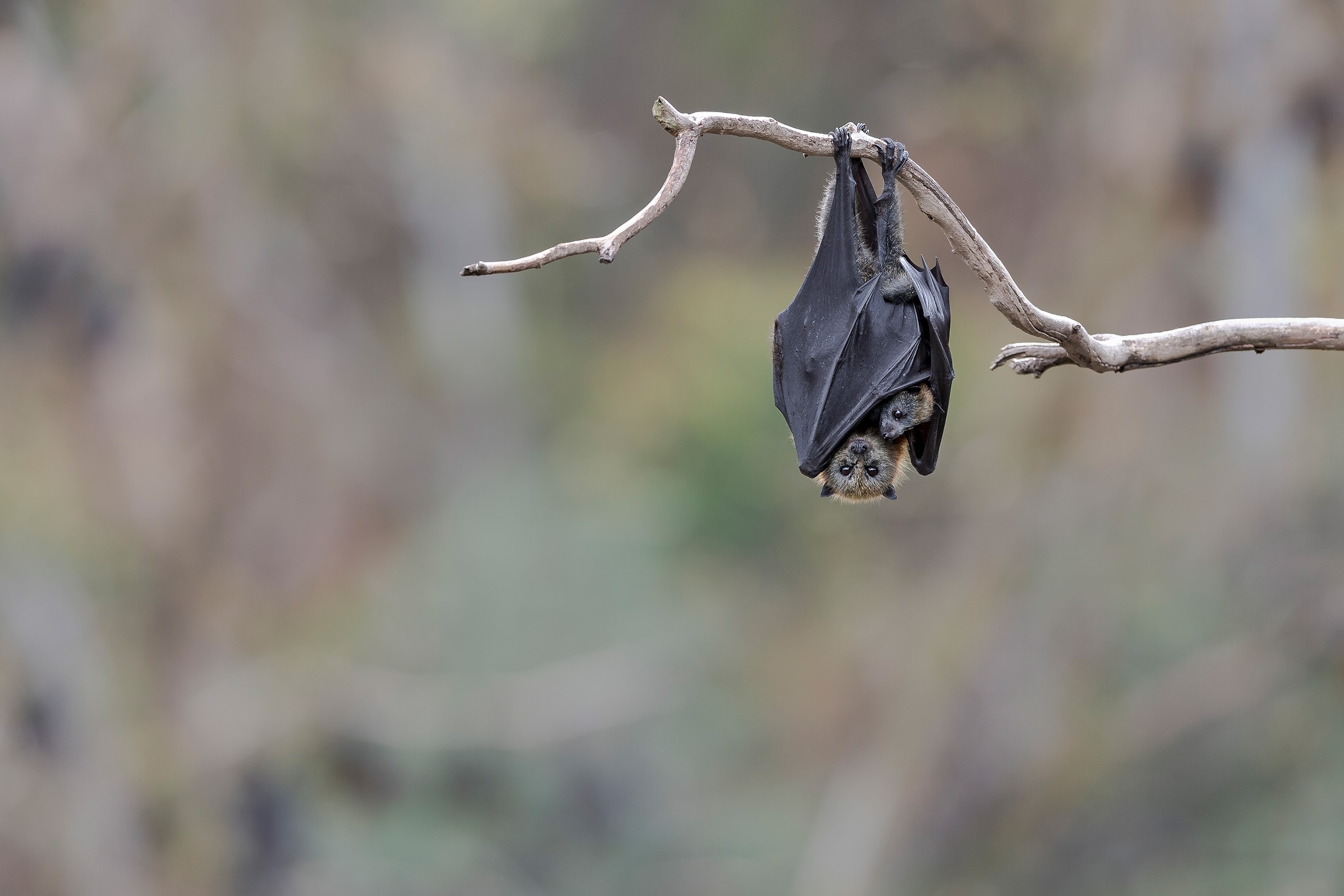Of the many ways to be born, live birth may be the most familiar to humans. We mammals deliver live, squirming babies, and we think of many other animals as laying eggs—but in reality, animals have found a variety of ways to bring their young into the world.
Live birth, also known as viviparity, is common throughout the animal world, and not just among mammals. It has emerged in fish, amphibians, insects, and arachnids, to name a few.
In fact, viviparity has evolved independently about 150 times in various animal species, including at least 115 times in living reptiles, a number three times higher than in all other vertebrates combined, says Henrique Braz, a herpetologist at the Butantan Institute in São Paulo, Brazil.
There are benefits—and drawbacks—to laying eggs and live-bearing, but these modes of reproduction aren’t an either/or proposition. Egg-laying and live-bearing are two points on a continuum, with many species straddling the middle. (Read about a lizard evolving from egg-laying to live birth.)
Halfway there
All mothers need to do one thing for their offspring: provide nourishment. That’s either as yolk in an egg or, for live-bearing animals, often directly from the mother’s body. (In the unique case of seahorses, it's the father's body that feeds the young.)
Some species manage to give birth to live young, yet the mother contributes little to no food in utero. They do this by retaining the babies in eggs inside the mothers’ bodies, letting the young grow and develop using the yolk as a food source. Then, when the young are fully formed and ready to get out into the world, they hatch inside their mother as they’re being born.
This kind of reproduction, called ovoviviparity, is common among venomous snakes called vipers, though not in most other snakes which lay clutches of eggs. There are also a number of fish—such as mollies and guppies—that reproduce this way. (Read more about how various animal groups give birth.)
One of the more surreal examples is the Suriname toad (Pipa pipa), an exceptionally flat, leaf-like amphibian from South American rainforests. During mating, the male deposits dozens of fertilized eggs onto the female’s back, and then her skin grows around the eggs, creating a surface like inverted bubble wrap. The offspring develop in these small wombs for months. Eventually they erupt from mom’s back and head into the water as little froglets, skipping the tadpole stage entirely.
Why such a strange system? Like other ovoviviparous species, the Suriname toad can give her eggs some protection by carrying them around—useful in a world full of hungry egg predators.
Dining in
Most live-bearing animals provide their babies with some form of sustenance directly.
In mammals, this is common. But West Africa’s critically endangered Nimba toad (Nimbaphrynoides occidentalis) is the only frog fed entirely from its mother’s resources in utero. Female Nimba toads have a nine-month pregnancy, feeding fetal toadlets with a nutritious “uterine milk.”
There are even some viviparous moms that get creative with feeding their young during pregnancy. African tsetse flies (Glossina morsitans) carry a single larva around in their uterus, and it’s fed with a kind of “milk” secreted from a special gland. The Pacific beetle cockroach (Diploptera punctata) gives birth to fully formed, miniaturized young, after fueling them with a similar uterine elixir.
The phenomenon of fetuses dining within the womb can get even stranger. Some live-bearing caecilians—worm-like amphibians that live almost entirely underground or in stream bottoms—actually feed on their mother from the inside. There, they scrape and eat the thickened lining of her oviduct, the passageway that carries eggs from her ovary.
And it can get even more gruesome. A number of shark species host an embryonic battle in the womb, with the babies killing and consuming their siblings for sustenance.
A deeper bond
Some animals take live-bearing even further, interlacing their own circulatory system with that of their developing young, nourishing them and eliminating waste through this linkage. This can take the form of a specialized, temporary organ, like a placenta. Though placentas are typically associated with “placental” mammals such as humans, cats, dogs, and whales, these groups don’t have a monopoly on the organ.




















“The organ is not actually just composed of mom's tissues or baby's tissues,” says Camilla Whittington, an evolutionary biologist at the University of Sydney. Technically, any organ comprised of both maternal and fetal tissues which exchanges nutrients counts as a placenta. Even marsupials, mammals that carry their young in pouches, have rudimentary placentas. And placentas also have evolved in some unexpected groups.
For example, that sharpnose sharks (Rhizoprionodon) nourish fetuses with an organ that looks precisely like a scaled-down version of a human placenta, Whittington says. There are also some lizard species that develop a placental link with their young, though the African skink Trachylepis ivensi is the only reptile species whose embryos can actually burrow into the wall of the oviduct, approaching the degree of implantation seen in mammal pregnancy.
Worth the effort
Viviparity is clearly not all-or-nothing, but a condition in which there’s flexibility. For example some lizards and snakes are egg-laying in one part of their geographic range, but live-bearers in another. Scientists even observed one lizard lay eggs and give birth to live young in the same clutch.
But why evolve live birth in the first place? There are definitely some drawbacks.
“If you ask any pregnant woman when she's about two weeks away from giving birth, it's pretty hard to locomote,” says Whittington. “And you can imagine if you're a pregnant lizard and you're very large, it might be hard to escape predators.” (These animals spawn the most offspring in one go.)
Carrying developing young internally also raises the stakes if a mother does get eaten. At least if you’ve deposited your eggs elsewhere, there’s a chance your genetic line may survive even if you perish.
Keeping young inside longer can help protect them, though, and it allows more direct control over their developmental conditions such as temperature. That may be why cold regions host a higher proportion of viviparous species than warmer locations.
"If you live in a cold or variable climate and you just leave your eggs in the nest and walk away, there might be a risk that it's too cold,” says Whittington.
Whatever advantages viviparous mothers gain from going through pregnancy and live birth, the ability has evolved scores of times throughout the animal kingdom—and that suggests that it must be worth the extra effort.
You May Also Like
Go Further
Animals
- Octopuses have a lot of secrets. Can you guess 8 of them?
- Animals
- Feature
Octopuses have a lot of secrets. Can you guess 8 of them? - This biologist and her rescue dog help protect bears in the AndesThis biologist and her rescue dog help protect bears in the Andes
- An octopus invited this writer into her tank—and her secret worldAn octopus invited this writer into her tank—and her secret world
- Peace-loving bonobos are more aggressive than we thoughtPeace-loving bonobos are more aggressive than we thought
Environment
- Listen to 30 years of climate change transformed into haunting musicListen to 30 years of climate change transformed into haunting music
- This ancient society tried to stop El Niño—with child sacrificeThis ancient society tried to stop El Niño—with child sacrifice
- U.S. plans to clean its drinking water. What does that mean?U.S. plans to clean its drinking water. What does that mean?
- Food systems: supporting the triangle of food security, Video Story
- Paid Content
Food systems: supporting the triangle of food security - Will we ever solve the mystery of the Mima mounds?Will we ever solve the mystery of the Mima mounds?
History & Culture
- Strange clues in a Maya temple reveal a fiery political dramaStrange clues in a Maya temple reveal a fiery political drama
- How technology is revealing secrets in these ancient scrollsHow technology is revealing secrets in these ancient scrolls
- Pilgrimages aren’t just spiritual anymore. They’re a workout.Pilgrimages aren’t just spiritual anymore. They’re a workout.
- This ancient society tried to stop El Niño—with child sacrificeThis ancient society tried to stop El Niño—with child sacrifice
- This ancient cure was just revived in a lab. Does it work?This ancient cure was just revived in a lab. Does it work?
Science
- The unexpected health benefits of Ozempic and MounjaroThe unexpected health benefits of Ozempic and Mounjaro
- Do you have an inner monologue? Here’s what it reveals about you.Do you have an inner monologue? Here’s what it reveals about you.
- Jupiter’s volcanic moon Io has been erupting for billions of yearsJupiter’s volcanic moon Io has been erupting for billions of years
- This 80-foot-long sea monster was the killer whale of its timeThis 80-foot-long sea monster was the killer whale of its time
Travel
- How to plan an epic summer trip to a national parkHow to plan an epic summer trip to a national park
- This town is the Alps' first European Capital of CultureThis town is the Alps' first European Capital of Culture
- This royal city lies in the shadow of Kuala LumpurThis royal city lies in the shadow of Kuala Lumpur
- This author tells the story of crypto-trading Mongolian nomadsThis author tells the story of crypto-trading Mongolian nomads







